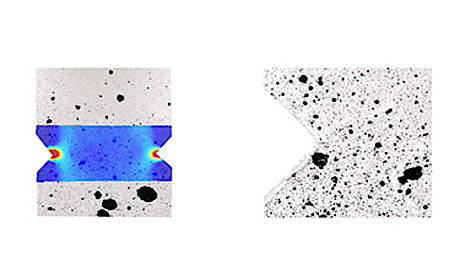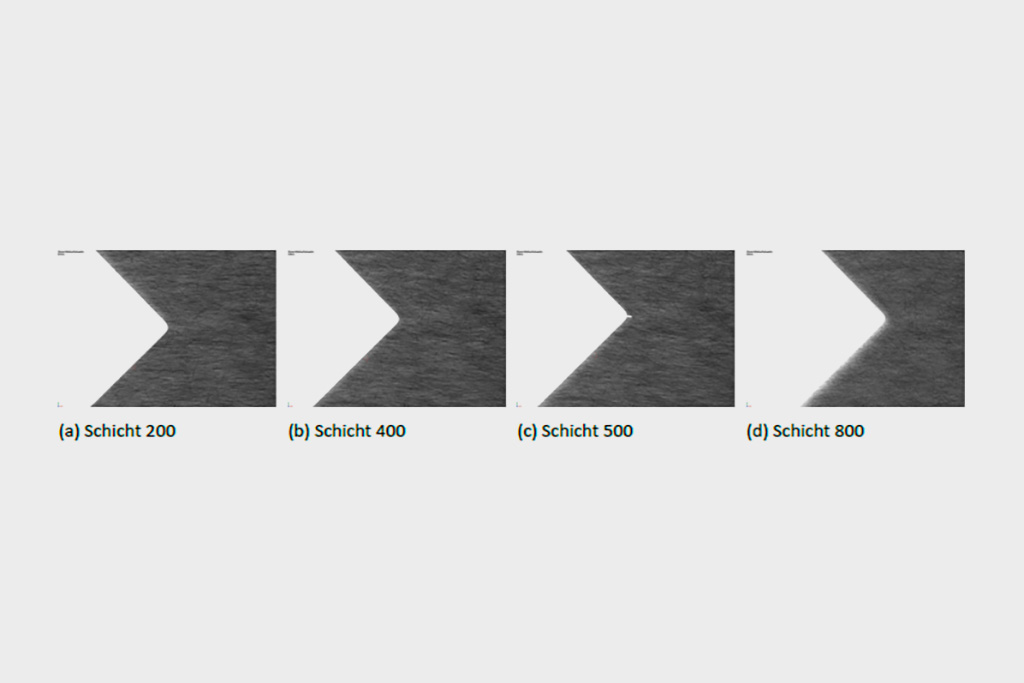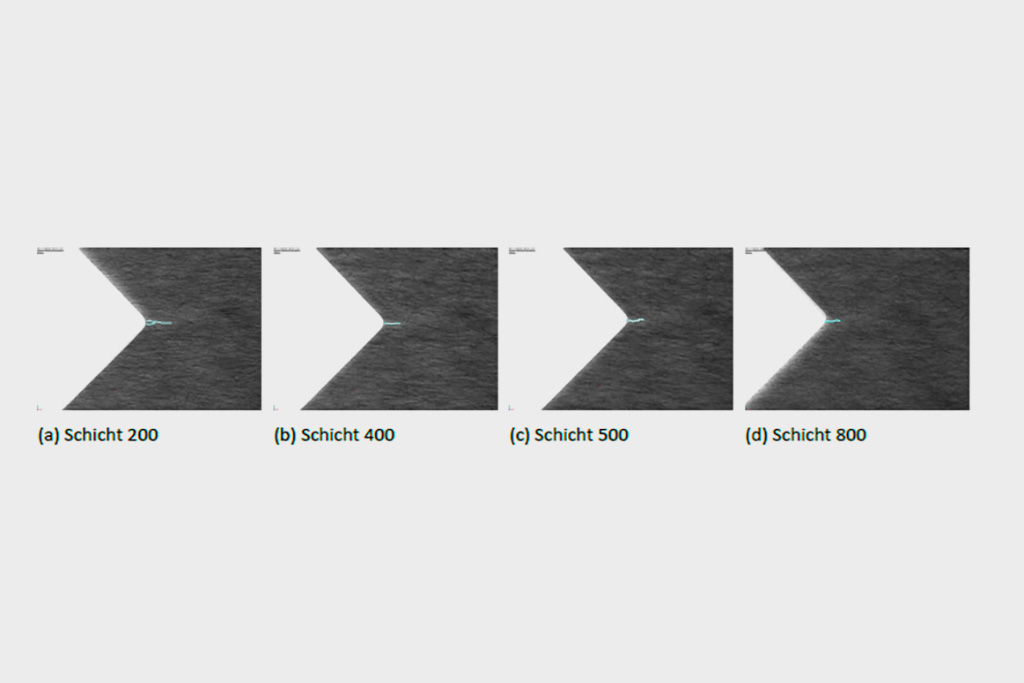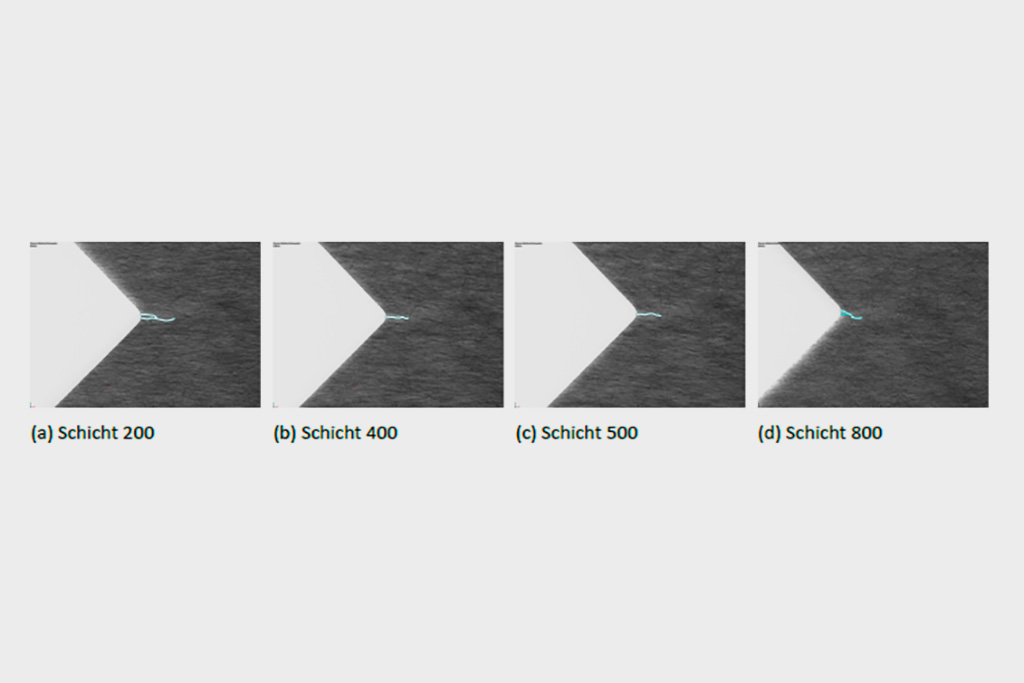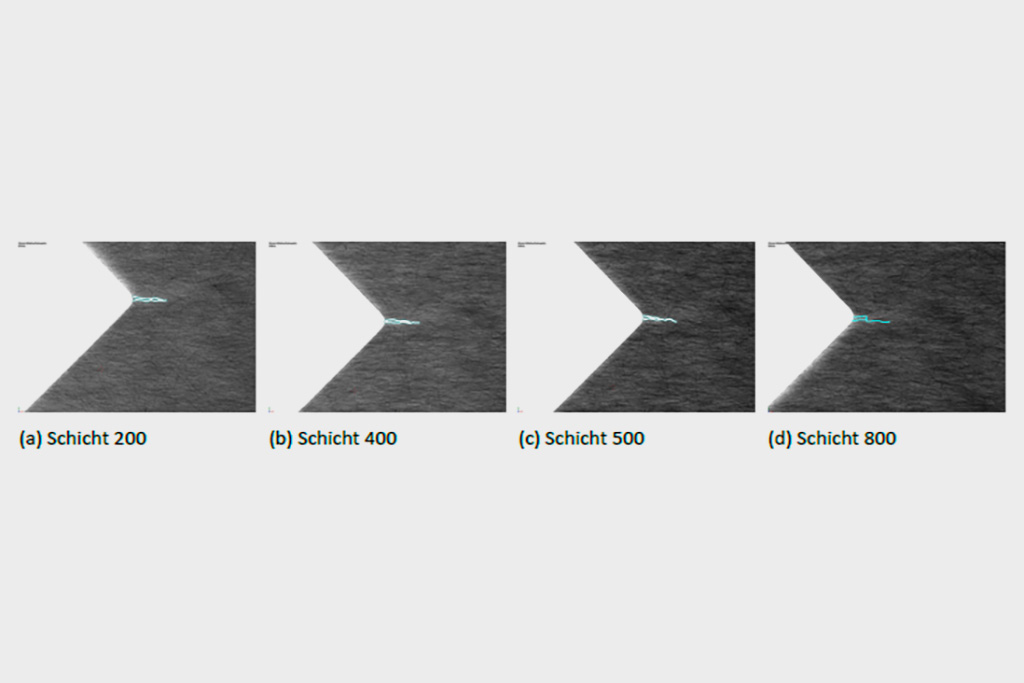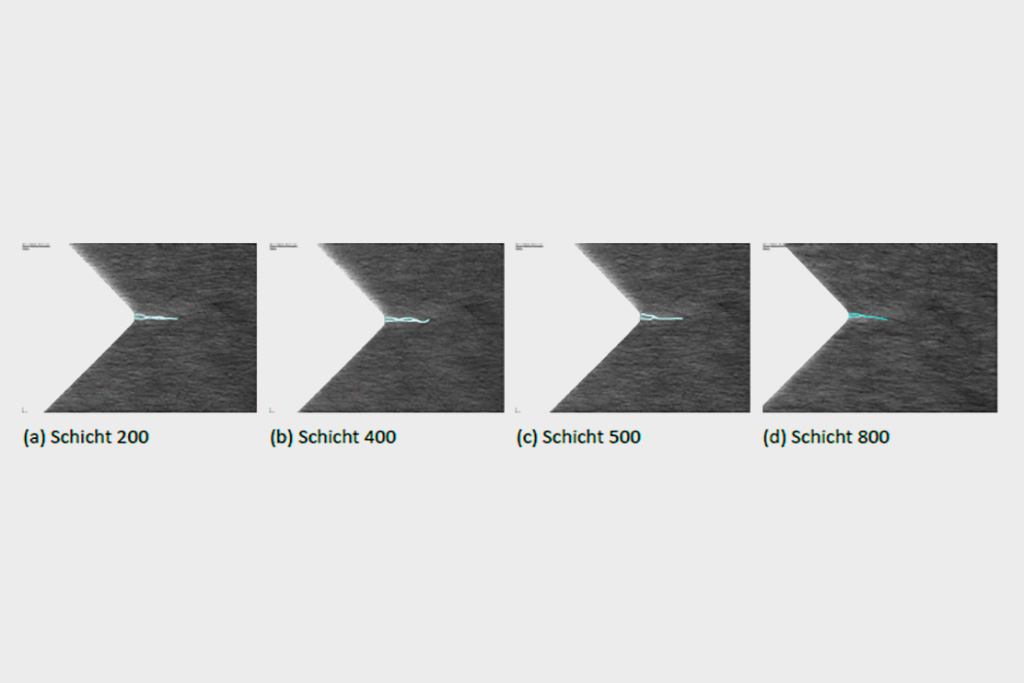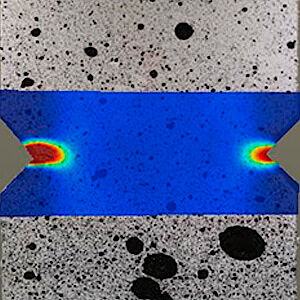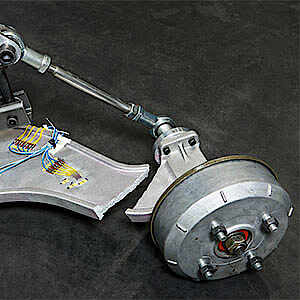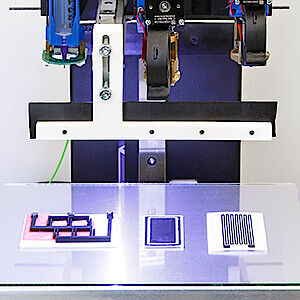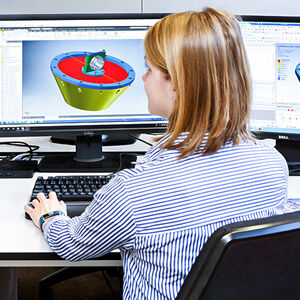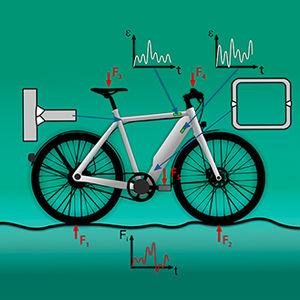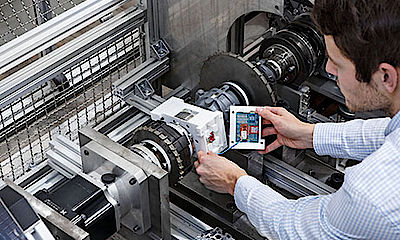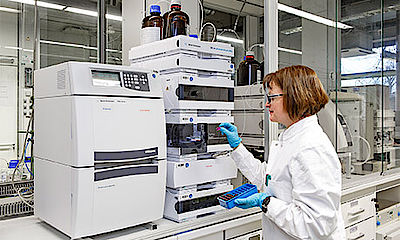Methods for generating added value in fatigue strength tests.
Local strain distribution, crack propagation, in-situ CT
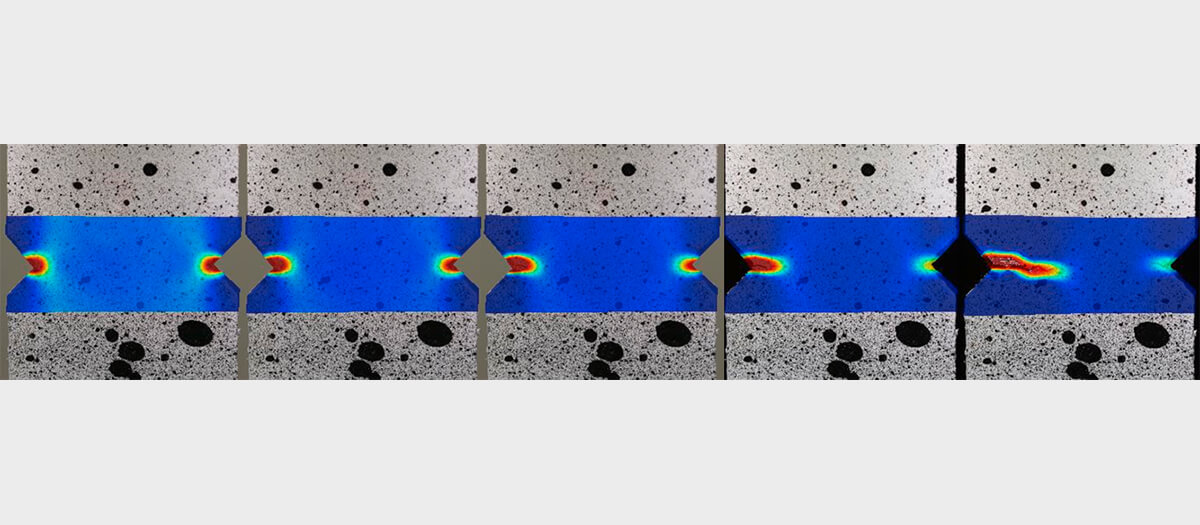
The ever-increasing complexity of innovative lightweight products requires precise knowledge of the materials used within them. When it comes to evaluating their lifecycle, knowledge of the number of cycles to failure alone is often inadequate. Additional parameters need to be used in a reliable design process, like rigidity, local creep tendency and crack propagation behavior. Scientists at Fraunhofer LBF have developed methods to calculate these parameters during conventional fatigue strength tests without the need for a great deal of additional work.
Background
The purpose of fatigue strength tests is to generate a maximum number of parameters that can describe and characterize material behavior under cyclical load. As computing power increases and it becomes possible to process large quantities of data, graphical image data records can be evaluated or the material volume of samples or components can be examined using in-situ CT analysis. The graphical imaging test methods in particular can provide information about crack initiation and crack propagation behavior or local strain distribution.
Incipient crack monitoring and digital image correlation in fatigue strength testing
In conventional fatigue strength tests, a high-resolution camera system creates photographic images of the current status of the sample or component in predefined cycle intervals at room temperature and under environmental load. This process can be used to examine the crack initiation and crack propagation behavior in highly stressed areas, providing an important parameter for damage behavior. If a speckle pattern is applied to the sample or component, the local strain distribution can be determined in post-processing in relation to the number of cycles.
This can be used to determine local creep and stress relaxation or strain distribution for two- and three-dimensional structures. It can also detect the start of the crack and the crack propagation.
In-situ CT analysis
The unique selling point of the in-situ CT system is that the sample or component being examined does not need to be removed from the testing frame for the CT analysis. The advantage is that the images can be made to determine the damage under load. This prevents any unwanted scatter effects, for example by removing and inserting the component.
The machine controller allows the fatigue strength test to be stopped and the CT analysis to be performed according to freely selected inspection intervals. This allows, for example, delamination effects to be examined on fiber composites, as well as crack formation and crack propagation. This system can achieve a technical resolution of 3 µm in this process. In addition, the computer tomography system can be used for radiography of large components.
Customer benefit
The benefit to the customer is that damage can be determined inside the stressed component at a micro-level. In addition, the propagation of damage can be tracked up until failure of the component during mechanical stress. This information can be used to determine designs for components or component groups that are appropriate for the material, as well as damage processes that are not externally visible.
Contact
- Dominik Spancken
- Phone: +49 6151 705-412
- dominik.spancken@lbf.fraunhofer.de
- Julia Decker
- Phone: +49 6151 705-491
- julia.decker@lbf.fraunhofer.de
